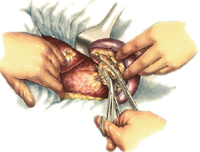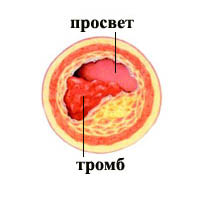Undoubtedly, the disease and removal of the spleen leads to a change in the immune status of the body and the development of infectious complications. What role in the body plays a spleen? Read more about this in this article.
Content
Splezenka, the largest lymphoid organ having an oval compiled shape, similar to the gland and located in the left upper part of the abdominal cavity, behind the stomach. It comes into contact with the diaphragm, pancreas, a colon and left kidney. The spleen does not apply to vital organs, and its innate absence or surgical removal does not have a profound effect on the viability and growth of the body.
Galen considered the spleen organ, «Full mystery». It is known that the ancient Greeks and Romans removed the Runners of the spleen to increase the speed of running. The functions of the spleen are not fully studied. For a long time, it was considered endocrine (deprived of output ducts) of iron. Since there are no reliable data on the secretory activities of the spleen, from this theory I had to abandon, although lately she got to some extent to the second life. Now the spleen is attributed to the hormonal regulation of the bone marrow function.
In the early stages of the development of the fetal spleen serves as one of the blood formation bodies. By the ninth month of intrauterine development, the formation of both red blood cells and leukocytes of the granulocytic series takes over the bone marrow, and the spleen, starting from this period, produces lymphocytes and monocytes. In some blood diseases, however, in the spleen again appear heragus foci, and in a number of mammals it functions as a hematopoietic body throughout life.
In an adult, a spleen performs several functions. As part of the reticulous endothelial system, it phagocytes (destroyed) the torn blood cells and platelets, and also turns hemoglobin in bilirubin and hemosidererin. Since hemoglobin contains iron, spleen - one of the richest iron tanks in the body. Like the lymphoid organ of the spleen is the main source of circulating lymphocytes, especially in youth and in young adults. In addition, it acts as a filter for bacteria, protozoa and foreign particles, and also produces antibodies; People devoid of spleen, especially small children, are very sensitive to many bacterial infections. Finally, as an organ involved in blood circulation, it serves as the erythrocyte reservoir, which in the critical situation again go to the bloodstream.
Diseases of the spleen
Development defects. There are cases of congenital absence of a spleen. Deviations are also possible in its sizes, form and structure, such as the development of additional shares. Often the addition spleen is detected, sometimes several. With the weakness of ligaments that fix the position of the spleen, it can move in the abdominal cavity; such a wandering spleen meets more often in women.
Siezen's heart attack - Pretty frequent phenomenon, although heart attack foci is usually small. Causes of infarction - leukemia and some infections.
Overting legs (break) spleen leads to a violation of its blood circulation and requires surgical intervention.
 Abscesses. The cause of abscesses may be its heart attack, as well as abdominal typhoids or subacute bacterial endocarditis. This is usually chronic, flowing without pain with a tendency to self-esteem.
Abscesses. The cause of abscesses may be its heart attack, as well as abdominal typhoids or subacute bacterial endocarditis. This is usually chronic, flowing without pain with a tendency to self-esteem.
Cysts. Extremely rarely in the spleen form epithelial and echinococcus cysts. Serous cysts are more common and, as well as breaks, are usually a consequence of injury.
Degenerative processes and neoplasms. Amyloid rebirth may be a consequence of chronic tuberculosis or osteomyelitis. Recently, amyloidosis (the shape of protein dystrophy) meets more and less. Atrophy of the spleen is often observed in old age and in patients with sickle-cell anemia.
Primary malignant tumors spleen rare, typical tumor - lymphosarcoma. Metastases in the spleen are marked even less.
Splenomegaly, or an increase in spleen, - A characteristic response of the organ into many pathological conditions. Splenomegaly may be associated with an increase in lymph nodes, ascites (the presence of liquid in the abdominal cavity), jaundice, leukopenia (decrease in the number of white blood cells), fever, increased liver or severe anemia. It is observed with many cardiovascular diseases; With many infectious diseases - malaria, abdominal typhoid, OPP, Corey, Syphilis, Meningitis, Scarlat and DR.; in diseases of blood - leukemia, hemolytic jaundice, chronic hemolytic anemia, usually congenital. Sometimes an increase in the spleen occurs during Hodgkin's disease; It reaches huge sizes in chronic myelolekosis. Metabolism disorders, especially fat metabolism, are also often accompanied by splenomegaly. Many liver diseases are reflected in the state of the spleen. First of all, it concerns the tanning syndrome, in which cirrhosis of the liver is accompanied by stagnant splenomegaly and anemia. In the hereditary disease - Goshe disease - there is a violation of the exchange of fats and splenomegaly.
Since splenomegaly - only the manifestation of any other disease, treatment should be directed to the primary cause. The removal of the spleen is shown in rare cases; Sometimes it is produced in diseases associated with the increased destruction of erythrocyte or platelets in it, in particular with a hemolytic jaundice, a thrombocytopenic purpura, a robe syndrome, but also to improve blood performance can be expected only in 30-60% of cases.









